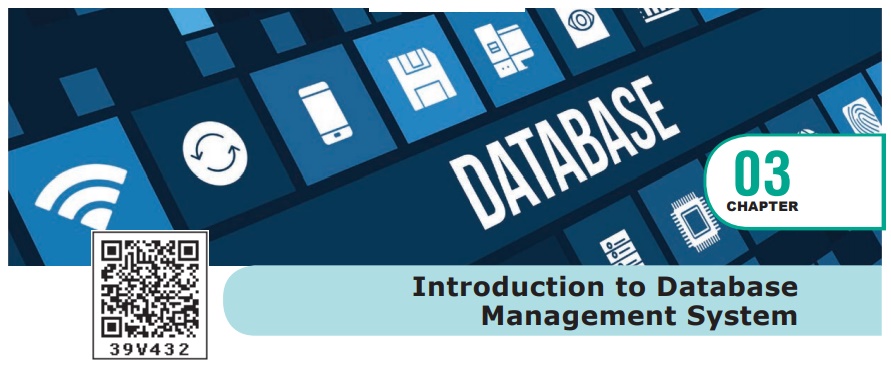Concepts, Evolution of DBMS - Introduction to Database Management System (DBMS) | 12th Computer Applications : Chapter 3 : Introduction to Database Management System (DBMS)
Chapter: 12th Computer Applications : Chapter 3 : Introduction to Database Management System (DBMS)
Introduction to Database Management System (DBMS)
Introduction
to Database Management System
DBMS stands for Database Management System, so let
us break down the words what they really mean. A database is a place where we
store, retrieve and manage data. So what’s a data then? Meaningful information
like your name, your favorite color etc to complex data like astronomical data
that scientist handle, everything comes under database. The management system
refers to a set of programs to manage the data, we have with various actions
like storing, retrieving, filtering etc. Some of the popular Database
Management System is MySQL, Oracle etc. Giving protection to data,
user-friendly for users etc, are some of the notable features of good DBMS.

Introduction to DBMS
Definition:
“A
database management system (DBMS) is
system software for creating and managing databases. The DBMS provides users
and programmers with a systematic way to create, retrieve, update and manage
data.”
What type of data is stored in a database?
In a database, we would be grouping only related
data together and storing them under one group name called table. This helps in
identifying which data is stored where and under what name.
Evolution of DBMS
The concept of storing the data started before 40
years in various formats. In earlier days they have used punched card
technology to store the data. Then files were used. The file systems were known
as predecessor of database system. Various access methods in file system were
indexed, random and sequential access. The file system had more limitations
like
Data Duplication
– Same
data is used by multiple resources
for processing, thus created multiple copies of same data wasting the spaces.
High
Maintenance – Access control and verifying data consistency needs high maintenance cost.
Security – less
security provided to the data.
So database systems became popular to overcome the
above limitations of file system.
DBMS Concepts
There exist few standards that are applicable to
all forms of database management Systems like Relational Database Management
System (RDBMS) and Object Database Management System (ODBMS). All DBMS adheres
to the following two basic concepts.
ACID
Properties – The acronym stands
for Atomicity, Consistency, Isolation and Durability. Atomicity follows the thumb rule “All or Nothing”, while updating
the data in database for the user performing the update operation. This update
operation is called as transaction and it either commits (successful updating)
or aborts (updating failure). Consistency
ensures that the changes in data value to be constant at any given instance.
This property helps in the successful transaction. Isolation property is needed during concurrent transaction. When
multiple users do the transactions by accessing same object at the same time,
the transaction is known as concurrent transaction. To prevent the conflict in
database update, the transactions are isolated from other user and serialized.
This is also known as Degree of Consistency. Durability is defined as the system’s ability to recover all
committed transactions during the failure of storage or the system.
Concurrency
Control and Locking – It is the DBMSs mechanism used for data sharing. When the same data is shared among multiple
users, proper access control is needed and privilege of changing the
applications data item is controlled through Locking.

Related Topics